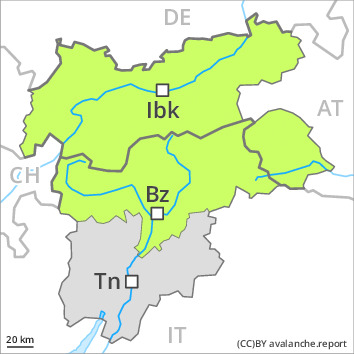
Danger level
 | 2400m |
|  |
|  |

A widespread favourable avalanche situation will prevail. Wind slabs require caution.
As a consequence of a strong wind, mostly small wind slabs formed in the last few days in particular at elevated altitudes. They are to be evaluated with care and prudence in particular in steep terrain. Additionally in very isolated cases avalanches can also be released in the old snowpack. Caution is to be exercised in areas where the snow cover is rather shallow. Individual avalanche prone locations are to be found on very steep shady slopes above approximately 2400 m and in gullies and bowls, and behind abrupt changes in the terrain.
Apart from the danger of being buried, restraint should be exercised as well in view of the danger of avalanches sweeping people along and giving rise to falls.
Snowpack
dp.6: cold, loose snow and wind
dp.4: cold following warm / warm following cold
The snowpack is well consolidated. Field observations and stability tests have confirmed a widespread favourable avalanche situation.
The fresh wind slabs are lying on soft layers in particular on west to north to east facing aspects above approximately 2400 m. As a consequence of solar radiation the snow drift accumulations stabilised.
In very isolated cases weak layers exist in the centre of the snowpack. This applies in particular on very steep shady slopes above approximately 2400 m.
At elevated altitudes snow depths vary greatly, depending on the infuence of the wind. Over a wide area less snow than usual is lying.
Tendency
On Thursday as a consequence of new snow and wind there will be only a slight increase in the danger of dry avalanches, in particular in the north and in the northeast. In the other regions the avalanche danger is low (level 1).


